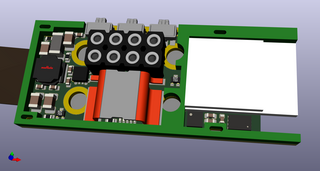Great to see some recent posts this year, I hope you get time to work on this soon.
I'd be interested in a few of these if/when you get to that point. For my personal application, waterproofing isn't a big deal - a lot of other power meters I see aren't waterproof, nor are some of the other electronics I'm using. "Splash-resistant" is probably enough, with the idea that it would be protected in a bag/case (or not used in heavy rain).
Regarding your display (power) issue, while the LCD looks awesome, could you use something smaller and only show one stat at a time (with a button to cycle through - possibly also have it 'sleep' and only go on when the button is pressed). Maybe even just use a 4 digit 7-segment display?
I came across this thread while looking for a simple/cheap power meter, mainly for stationary application (but also for my ebike if it's good enough). I don't suppose you have any old prototypes you'd be willing to part with, or if you'd be willing to post details of the design (even just partial, or old versions)?
I'm wanting to monitor bidirectional current to about a dozen 48v battery packs simultaneously, and don't need many of the features, just some way to log the current every few seconds. I've been trying to make something myself (shunt + INA226 + arduino or ESP8266) but my prototypes keep failing. I think noise filtering is my issue, I just don't know much about it. So even just your circuit for the INA226 would be of great help to me!
I'd be interested in a few of these if/when you get to that point. For my personal application, waterproofing isn't a big deal - a lot of other power meters I see aren't waterproof, nor are some of the other electronics I'm using. "Splash-resistant" is probably enough, with the idea that it would be protected in a bag/case (or not used in heavy rain).
Regarding your display (power) issue, while the LCD looks awesome, could you use something smaller and only show one stat at a time (with a button to cycle through - possibly also have it 'sleep' and only go on when the button is pressed). Maybe even just use a 4 digit 7-segment display?
I came across this thread while looking for a simple/cheap power meter, mainly for stationary application (but also for my ebike if it's good enough). I don't suppose you have any old prototypes you'd be willing to part with, or if you'd be willing to post details of the design (even just partial, or old versions)?
I'm wanting to monitor bidirectional current to about a dozen 48v battery packs simultaneously, and don't need many of the features, just some way to log the current every few seconds. I've been trying to make something myself (shunt + INA226 + arduino or ESP8266) but my prototypes keep failing. I think noise filtering is my issue, I just don't know much about it. So even just your circuit for the INA226 would be of great help to me!











